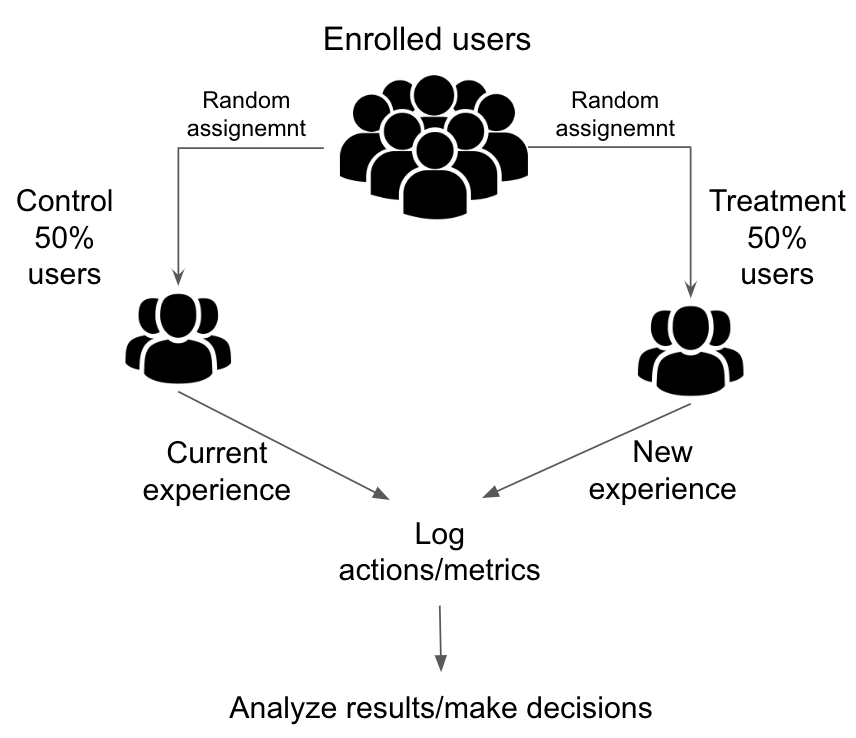What is A/B testing?
A/B Testing in Python

Moe Lotfy, PhD
Principal Data Science Manager
Intro to A/B testing
An A/B test is...
- an experiment designed to test which version is better
- based on metric(s): signup rate, average sales per user, etc.
- using random assignment and analyzing results
To A/B test or not to test?
Good use of A/B testing:
- Optimizing conversion rates
- Releasing new app features
- Evaluating incremental effects of ads
- Assessing the impact of drug trials
Do not A/B test if:
- No sufficient traffic/"small" sample size
- No clear logical hypothesis
- Ethical considerations
- High opportunity cost
A/B testing fundamental steps
- Specify the goal and designs/experiences
- Randomly sample users for enrollment
- Randomly assign users to:
- control variant: current state
- treatment/test variant(s): new design
- Log user actions and compute metrics
- Test for statistically significant differences

Value of randomization
- Generalizability and representativeness
- Minimizing bias between groups
- Establishing causality by isolating treatment effect

1 https://www.statology.org/random-selection-vs-random-assignment/
Python example of random assignment
checkout.info()
RangeIndex: 9000 entries, 0 to 8999
Data columns (total 6 columns):
# Column Non-Null Count Dtype
0 user_id 9000 non-null int64
1 checkout_page 9000 non-null object
2 order_value 7605 non-null float64
3 purchased 9000 non-null float64
4 gender 9000 non-null object
5 browser 9000 non-null object
dtypes: float64(2), int64(1), object(3)
memory usage: 422.0+ KB
Python example of random assignment
checkout['gender'].value_counts(normalize=True)
F 0.507556
M 0.492444
Name: gender, dtype: float64
sample_df = checkout.sample(n=3000)
sample_df['gender'].value_counts(normalize=True)
M 0.506333
F 0.493667
Name: gender, dtype: float64
Python example of random assignment
checkout.groupby('checkout_page')['gender'].value_counts(normalize=True)
checkout_page gender
A M 0.505000
F 0.495000
B F 0.507333
M 0.492667
C F 0.520333
M 0.479667
Name: gender, dtype: float64
Let's practice!
A/B Testing in Python

